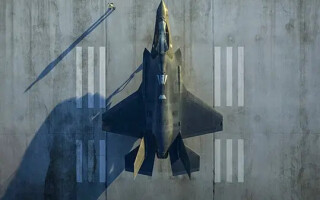Autumn acquisitions touch military embedded computing, safety-critical markets
StoryNovember 16, 2016
Two key acquisitions colored the fall season in the embedded world, both of which will affect military embedded computing applications. One was at the component level, the other at the board and subsystem level, as Qualcomm bought NXP, formerly Freescale, for about $47 billion and then soon after Mercury Systems picked up avionics computer supplier Creative Electronic Systems (CES) for about $38 million.
Two key acquisitions colored the fall season in the embedded world, both of which will affect military embedded computing applications. One was at the component level, the other at the board and subsystem level, as Qualcomm bought NXP, formerly Freescale, for about $47 billion and then soon after Mercury Systems picked up avionics computer supplier Creative Electronic Systems (CES) for about $38 million.
While autumn 2016 is not the shopping spree we saw back when Curtiss-Wright and GE Intelligent Platforms (now Abaco Systems) were buying up companies – and advertisers of ours – each deal has an impact on the military electronics arena.
Qualcomm and NXP
NXP produces mixed-signal semiconductor electronics for defense RF applications – gallium nitride (GaN) and laterally diffused metal oxide semiconductor (LDMOS) products – as well as materials for automotive uses, broad-based microcontrollers, secure identification, and network processing. Via its acquisition of Freescale in 2015, NXP also produces the PowerPC processors that are used in many legacy VME single-board computers. The acquisition news has some concerned that support for those chips may evaporate. PowerPC technology dates back to Freescale’s acquisition of Motorola Computer Group in the previous decade.
“Qualcomm buying NXP disturbs me regarding the continued longevity of PowerPC,” says Ray Alderman, chairman of the board for VITA, the standards body behind the VME, VPX, and other military embedded computing standards development. “The PowerPC roadmap may be less solid as Qualcomm is unlikely to focus on big processors like the PowerPC Altivec.”
It’s also true that Qualcomm does not have much military business, as its volumes and profits are generated by the much-larger consumer markets. Yet the RF business that supports many military radar applications is likely to not be affected too much by the change in ownership, as the RF world is lucrative and GaN components are some of the hottest products not only in the military RF world but in other larger commercial markets as well.
Mercury Systems, CES, and avionics safety certification
While the NXP acquisition is hotter news in other markets, Mercury purchasing CES is big news in the military embedded computing world. With this acquisition, Mercury is taking a big step into the safety-critical avionics market. CES has been quite successful in enabling commercial off-the-shelf (COTS) embedded computing elements to be certified up to Design Assurance Level (DAL) A for DO-254 and DO-178.
“The addition of CES adds important and complementary capabilities in mission computing, safety-critical avionics, and platform management that are in demand from our customers,” says Mark Aslett, Mercury’s president and chief executive officer. “These new capabilities will also substantially expand Mercury’s addressable market into commercial aerospace, defense platform management, C4I [command, control, communications, computers, and intelligence] and mission computing – markets that are aligned to Mercury’s existing market focus.”
While this deal vaults Mercury into the commercial avionics world, it should be noted that Mercury does already play in the commercial aviation world with low-noise amplifiers (LNAs) that are used on commercial aircraft for WiFi access, ground-based air-traffic-control radar amplifiers, and W band pixels used for obscured-landing vision systems.
The CES acquisition also enables Mercury to compete in one more market with long-term rivals Curtiss-Wright and Abaco Systems, as the latter two are already finding success in the safety-critical world with their COTS products.
Certifying COTS to the highest design levels is a growing demand from end users who are squeezing integrators to use more COTS and commercial technology in the more complex avionics systems they are developing – the demand to bring the graphics and computing innovation seen in the commercial world to the cockpit. For more on this topic, read the Q&A with Paul Hart, CTO with Curtiss-Wright Defense Solutions, about certifying COTS for DAL level A on page 26.
So will we see any more mergers before year’s end?
While the mergers in this sector of the military market have slowed down for a while, the recent activity shows it may be starting to pick back up, Alderman says. “Military embedded suppliers are swiped up for two main reasons. One, because the acquired company has healthy contracts/design-ins with the military on multiple programs and in the long run can be like buying an annuity – it keeps on giving. Number two is to gain expertise on a technology not currently in your repertoire and to gain entry to another slice of the market, such as safety-critical avionics.
“I think that we will probably see some more mergers and acquisitions in our industry based on these reasons,” he continues. “And while I don’t know the details, I suspect these were also the reasons behind the Mercury acquisition of CES, which has the contracts and also has strong technology that Mercury does not have in the commercial avionics market.”





